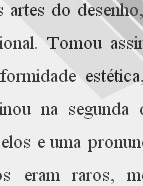

................................
However, these percentages had to be corrected by considering the first three genres. The occurrence of themes and not their volume was accounted for. As is known, many authors wrote fiction, poetry, literature and history and sometimes intensively. Art studies were, in general, a minority, as may be deduced from their main activities listed in the Grande Enciclopédia Portuguesa e Brasileira s.d. [1935-1960] [Great Portuguese and Brazilian Encyclopedia, undated] [1935-1960] and in Verbo: Enciclopédia Luso-Brasileira de Cultura] (1963-1980) [Verbo: Luso-Brazilian Encyclopaedia of Culture (1936-1980)] Among the one hundred and seventy-six authors, only twenty-eight are referred to as art scholars. The entries of the remaining one hundred and forty-eight were for reasons unrelated to their work in this field.
Without escaping these constraints, art historiography experienced ongoing development. A count of the main books published between 1800 and 1940 shows that their number grew steadily from the 1860s, doubled between 1895 and 1910, and reached a new peak in the 1920s.
Historiography fostered the regular practice of archival research, which was reflected in the erudite and descriptive line. Sousa Viterbo (Porto, 1845 - Lisbon, 1910) is an outstanding example of this paradigm. Despite holding a degree in Medicine, he barely practised this profession and became a professor of History of Architecture at the Escola das Belas-Artes and a journalist. In addition to his large body of literary and historical work, he dedicated himself wholeheartedly to art, where he excelled in his incomparable archival research. His bibliography on art, with two dozen titles, gave considerable prominence to the "industrial arts". He began by writing on A Exposição de Arte Ornamental [The Exhibition of Ornamental Art] (1883) and the Mosteiro de Santa Cruz de Coimbra [Monastery of Santa Cruz de Coimbra] (1890), but became an undisputed reference as a result of the Dicionário Histórico e Documental dos Arquitectos, Engenheiros e Construtores Portugueses ou ao Serviço de Portugal [Historical and Documentary Dictionary of Portuguese Architects, Engineers and Builders or at the Service of Portugal] (three volumes, 1899, 1904 and 1922) and the Notícia de Alguns Escultores Portugueses [Notes on Some Portuguese Sculptors] (1900) and Notícia de Alguns Pintores Portugueses [Notes on Some Portuguese Painters] (three volumes, 1903, 1904 and 1915).
